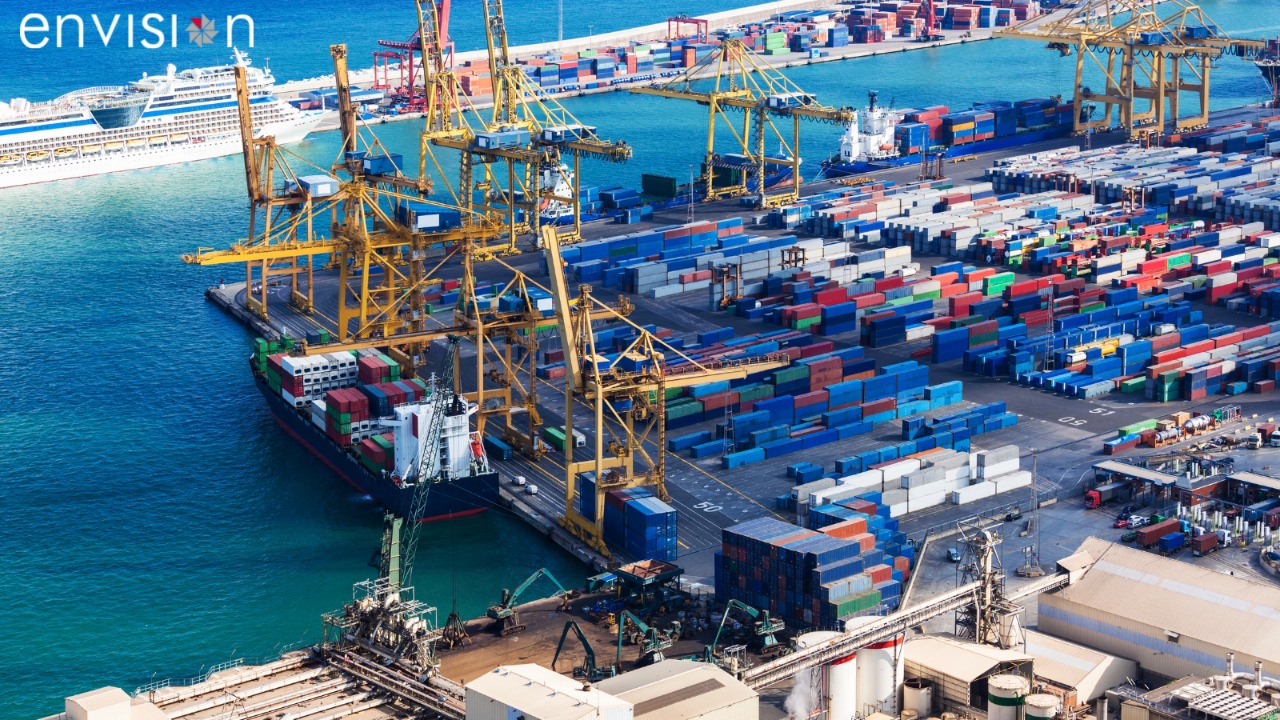Envision
Transforming Seaports through Digitalization : A New Era of Efficiency and Sustainability

With the advent of Economy growth and for sustenance our nation is rapidly improving the infrastructure for the transportation of goods from Industrial zones to Ports and the hinterland.The maritime sector with the boost has identified digitalization as a mantra for rapid growth.
Seaport digitalization is a rapidly expanding trend in the maritime sector. By deploying automation tools, Ports and terminals can efficiently manage people, vessels, and trade cargo in a safer, more streamlined in an efficient manner.
The elimination of manual paper-based procedures is one of the most important advantages of digitization. Seaports can process and track cargo precisely with the use of the latest automation tools, such as customer and logistic portals.The operations at the terminal can be streamlined by integrating cranes, cargo tracking systems, and logistics operations by using digital technology. This improves the efficiency and turnaround for better revenue realization and minimizes human errors
Seaports can track the position and status of cargo and vessels using real-time data analytics and monitoring, enhancing security and transparency for all parties engaged in the supply chain. Additionally, it enables better port operation planning and administration, which may boost output and shorten vessel wait times.
Digitalization can also improve security and safety in seaports. Seaports may better monitorand manage access to the port by utilizing cutting-edge technologies like biometric identification and video surveillance, which ensure that only authorized individuals and goods are permitted entry. With enhanced digitalization security and surveillance can be improved to avoid any pilferage and intrusions.
Additionally, digitalization may result in seaports with better environmental sustainability. Seaports may optimize energy consumption and improve their carbon footprint while also reducing the environmental impact of their operations by implementing smart energy systems and effective technology. This can enhance the seaport's reputation by displaying a dedication to ethical and sustainable operations.
The port and terminal gate movement process is now being equipped with RFID, Geo-tagging, and a camera that identify the vehicle and cargo details while entering and leaving the port. That equipment is integrated and works in tandem resulting in less congestion at the port gate.
Digitalization has proved that the ports and logistics sector benefits from the investment and reduces the dependency on manual intervention there by increasing customer delight and satisfaction.
Talk to us today to know how our solutions can accelerate your digital transformation
Let's Talk

































